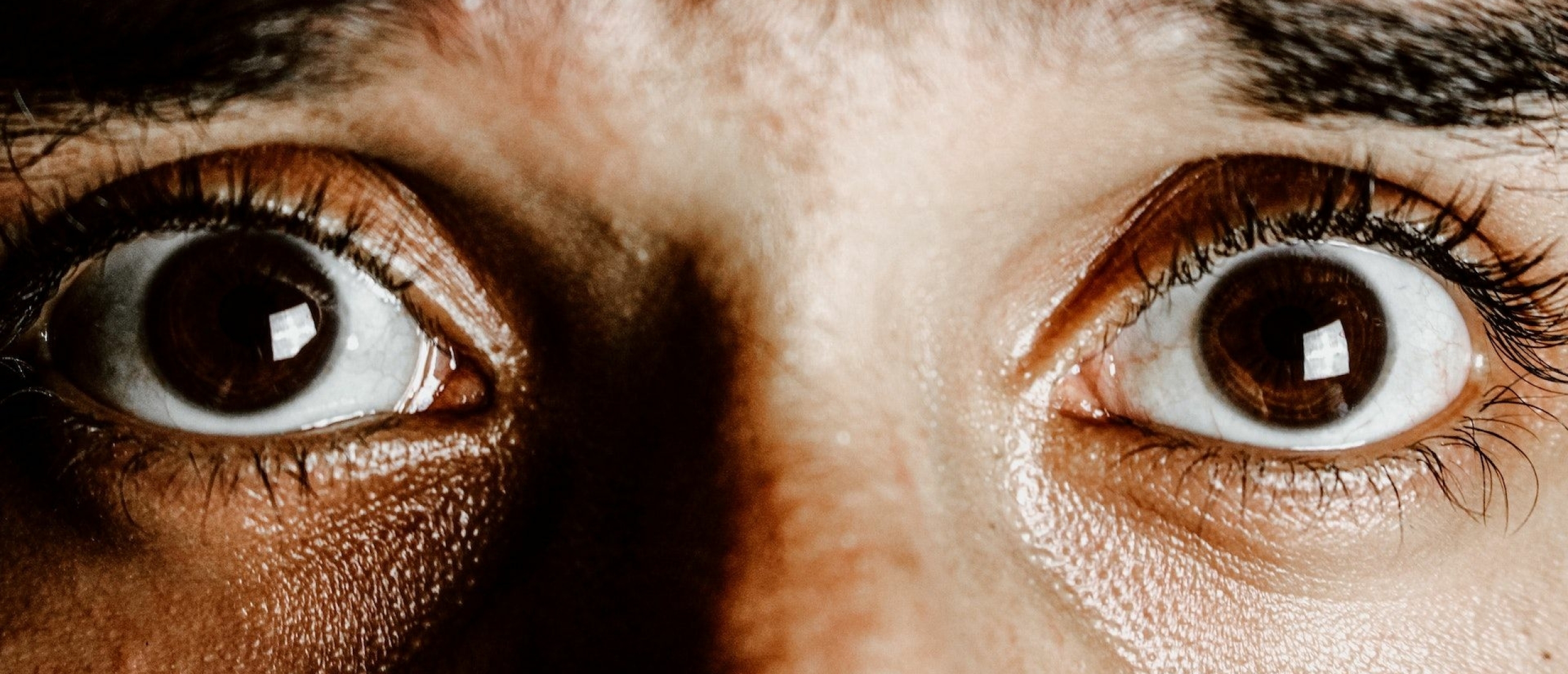
Posttraumatic stress disorder (PTSD) is a serious anxiety-related disorder which can manifest itself after a person has experienced or witnessed a traumatic event. Such traumatic events may include sexual abuse, traffic accidents, terrorist attacks, or war. PTSD may also develop in families of victims, rescue workers or emergency personnel.
Persons with PTSD suffer from reactions that most people will experience following trauma, but for a very long time. Some of those reactions are nervousness, fear, shock, anger and guilt (although guilt is no longer part of the official diagnostic criteria nowadays). These feelings may even increase over time, and can become so strong that they prevent the living of a normal life. PTSD patients who have these feelings for more than one month cannot function as well as they used to do before the traumatic event happened.
A brief history of posttraumatic stress disorder
PTSD has been repeatedly described and harshly debated during the 20th century. For example, rescuers of survivors of ship explosions in Toulon (France) in 1907 and 1911 exhibited many PTSD symptoms, such as reliving the explosions, anxiety problems, and fatigue. PTSD has been termed “shell shock syndrome” during World War I. After that, the burden of compensation for war-induced neurotic illness resulted in restrictive administrative decisions, such as NOT to compensate financially for battle shock during World War II in the UK. Also, in the US army it was decided to use the name “battle fatigue” so that PTSD / shell shock syndrome would not be recognized as a pathological condition. It was not until Vietnam veterans reported the same symptoms as those of soldiers in both World Wars that stress- and trauma-induced pathologies became officially recognized as PTSD in 1978.
Posttraumatic stress disorder diagnostics
The diagnostic criteria have since evolved from outstanding stressors (trauma such as terrorist attacks or war) to also include milder and frequent stresses (road traffic accidents, assaultive violence). Exposure to traumatic events is therefore not perceived as rare, and would thus occur quite frequently. Some studies report that the probability of experiencing a traumatic event during one’s life may equal as much as 97% for men living in the United States. Other studies report lower values, ranging from 43 to 81%.
PTSD is diagnosed not before one month after the traumatic event had taken place. If symptoms are still present then, a complete medical history and a physical exam will be performed. Sometimes, symptoms occur much later, and can present themselves for the first time after a couple of years.
Posttraumatic stress disorder symptoms
A hallmark of PTSD is reliving the traumatic event. People with PTSD may experience flashbacks, nightmares or hallucinations. Reliving can occur spontaneously, but may also be triggered by certain things that are reminders of the traumatic event, such as movies, conversations, or the anniversary date of the event.
Another typical symptom of PTSD is the avoidance of situations, people or places that are reminders of the traumatic event. This often results in social withdrawal. People with PTSD will thus distance themselves from family and friends. Also, they might lose interest in activities that they enjoyed before the traumatic event took place.
PTSD often leads to a variety of symptoms that are often grouped together under the umbrella of "increased arousal". These symptoms are in essence manifestations of severe stress, and can be mental or physical. Mental problems include insomnia, irritability, difficulty concentrating, outbursts of anger and aggression, difficulty showing affection, easily startled, increased fear and increased anxiety. Physical symptoms are for instance high blood pressure, accelerated heart rate, muscle tension, rapid breathing, diarrhea and nausea.
Another group of symptoms is related to negative thoughts and feelings. These are thoughts and feelings related to blame, sometimes even guilt, and haunting memories of the traumatic event.
It should be noted that young children too can develop PTSD, just like older children and adults. Young children suffering from PTSD may express symptoms more typical for their age, and are related to their cognitive development such as motor skills, language learning and toilet training.
Posttraumatic stress disorder treatment
Treatment of PTSD relies on medication, psychotherapy, or a combination of the two. Treatments are designed to reduce the strong emotional component of the traumatic memory. Thus, the goal of treatment is not to make the person forget the traumatic event, but to improve his or her coping with the event that has caused PTSD. This will lead to better daily functioning and reduce the severity of PTSD symptoms, or abolish them altogether.
Medication
There are quite a number of medications to treat PTSD, but none of them has been specifically designed for the treatment of the disorder. Medical treatment thus concerns the reduction of symptoms, which might indeed improve the condition of the person with PTSD.
To treat mood problems in PTSD, antidepressants are often described. Antidepressants are also often used to reduce feelings of anxiety. The most commonly prescribed medications are selective serotonin reuptake inhibitors (SSRIs). SSRIs augment the concentration of serotonin in the brain, a signaling molecule that has in general a calming effect and reduces anxiety, anger and aggression. However, SSRIs may give adverse effects, especially when a patient starts taking them. In the beginning of SSRI treatment, feelings of anxiety may increase (not decrease), and some persons taking SSRIs become suicidal. Close monitoring of a person’s mental health is therefore recommended. Prescribed SSRIs include fluoxetine (marketed as Prozac), citalopram (Celexa), paroxetine (Paxil), fluvoxamine (Luvox) and sertraline (Zoloft). Antidepressants and anxiolytics that are sometimes used are the so-called tricyclic antidepressants, which have been discovered in the 1950s, but have largely been replaced by SSRIs. Some other drugs that are rarely used include medication against seizures (epilepsy), but suffer from severe side effects. Their use is therefore waning.
Other medications are prescribed to treat insomnia (clonidine, Catapres) or to prevent nightmares (prazosin). Finally, benzodiazepines (lorazepam, Ativan) that reduce anxiety and sleeping problems in patients with anxiety disorders do not show much benefit for the treatment of anxiety in PTSD and can induce dependence. Benzodiazepines are therefore not recommended for the treatment of PTSD symptoms.
Psychotherapy
Psychotherapy is aimed to help persons with PTSD to acquire skills to better cope with the memories of traumatic events. This will help to manage PTSD symptoms better. There can also be an educational aspect to psychotherapy, in that the psychiatrist teaches the PTSD patient and his or her family about the disorder, which makes it easier for the patient to deal with his or her fears.
One approach that has been quite successful is prolonged exposure therapy. It is also known as extinction therapy. This is a form of behavioral therapy in which the PTSD patient is forced to relive the traumatic event, or is exposed to situations that are related to the event and cause anxiety. Prolonged exposure therapy is done together with a psychiatrist under well-controlled conditions. The patient learns that the situations that he or she is exposed to are not dangerous, which leads to reduction of fear and anxiety. It is a form of safety learning. The problem with this approach is that the fear memory related to the trauma stays intact in the brain. In quite a few patients, this memory is so strong that, with time, it will outcompete the safety memory, causing the PTSD symptoms to resurface.
Another approach is cognitive behavioral therapy. With this approach, people with PTSD are taught to recognize their negative thought patterns that disturb their emotions, feelings and behavior. This approach is especially used to reduce feelings of anxiety.
A more profound analysis and therapy is offered by psychodynamic therapy, originally developed by Sigmund Freud. He is the founder of psychoanalysis, the treatment of mental problems through conversations between psychiatrist and patient. Psychodynamic therapy helps to identify deeper causes of mental problems that are hidden in the subconscious. For the treatment of PTSD, the psychiatrist and the patient search together for emotional conflicts caused by the traumatic event.
Family therapy is also used, and can be helpful when the behavior of the person with PTSD affects other family members. Group therapy serves to share thoughts, feelings and other problems with other people who have experienced traumatic events and have developed PTSD.
A relatively new form of therapy is Eye Movement Desensitization and Reprocessing (EMDR), developed by Francine Shapiro in the 1990s. The person with PTSD is first asked to recall the traumatic event. Then, the therapist directs the patient in some type of what is called “bilateral sensory input”. This can for instance be side-to-side eye movements or hand tapping. Although it is not completely understood why EMDR works, it produces similar results as traditional therapies, such as cognitive behavioral therapy and prolonged exposure therapy.
Combination of medication and psychotherapy
Often, psychotherapy is combined with medication, especially SSRIs. However, such a combination is often only marginally superior to psychotherapy alone. New approaches are therefore under development.
One new and promising therapy concerns the disruption of fear memory reconsolidation. The reconsolidation of memory means that the memory can be updated with new information following the recall of that memory. This means that following a memory recall, the memory becomes temporarily weaker, then gets updated, and then strengthens again. The period of weakening, which lasts a few hours, is now being targeted by scientists. The idea is that the fear memory recall with a psychiatrist will weaken the fear memory, which is then followed by medication that prevents the restrengthening of the memory.
In practice, a person with PTSD is asked by a psychiatrist or psychologist to write down all he or she remembers about the traumatic event. Then the patient will take medication, which is propranolol (a beta-adrenergic receptor blocker used to treat high blood pressure for instance). After just a few sessions of memory recall and propranolol intake, the person with PTSD will have lost his or her fear, but still remembers the traumatic event.
Some success with this therapy has already been reported. The persons treated this way still remember what has happened to them, but are no longer bothered by it. The benefit of this approach is that it acts on the fear memory itself, and does not create a new, competing, safe memory as in prolonged exposure therapy. Therefore, the disruption of memory reconsolidation may be a promising approach for the treatment of PTSD in the near future. However, more scientific research on memory reconsolidation is still needed before any medication that disrupts memory reconsolidation can be broadly applied.










